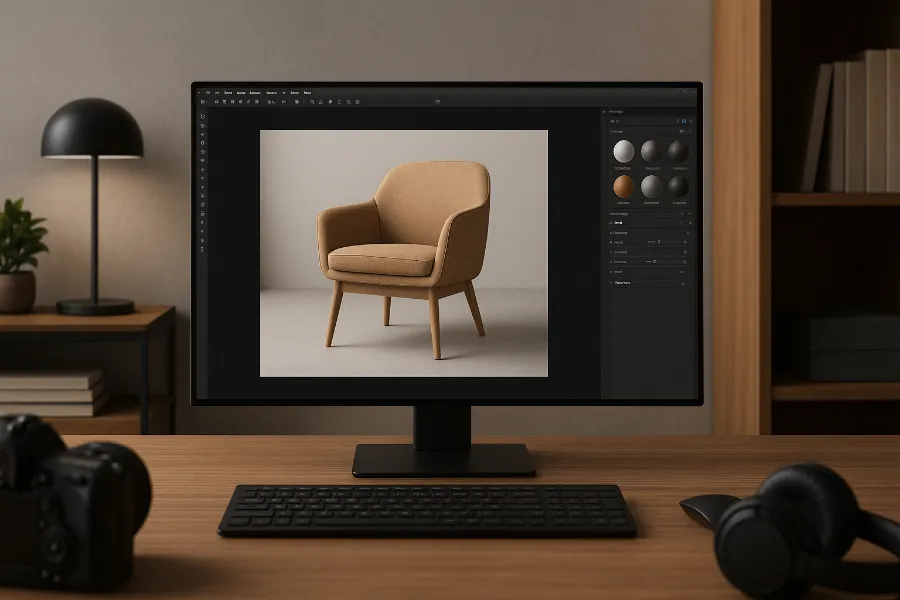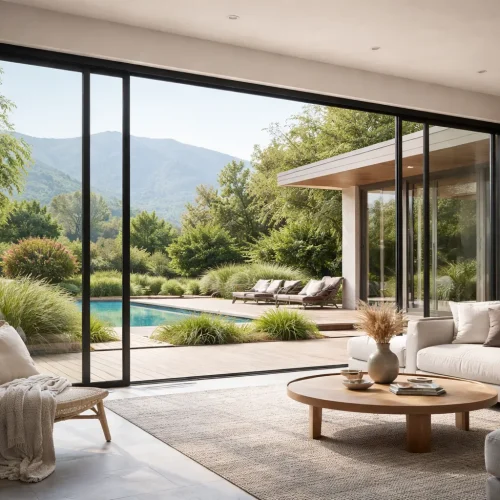
Picture launching a furniture collection without building a single prototype. Sounds impossible? Not anymore. Digital product visualization has changed how companies bring ideas to market, cutting development cycles from months to weeks while eliminating the $15,000 average cost of physical samples. When photorealistic rendering meets strategic marketing needs, businesses gain a competitive edge that traditional photography simply can’t match.
What Makes Professional Product Visualization Different
The gap between amateur 3D work and studio-grade output is massive. Professional teams don’t just model – they engineer visual assets that perform across platforms. A skilled 3d product modeling studio combines technical precision with artistic sensibility, ensuring every polygon serves a purpose.
Consider topology optimization. Clean mesh structures mean faster rendering times and smaller file sizes – crucial when you’re managing hundreds of SKUs for an e-commerce catalog. According to Shopify’s 2024 Merchant Report, product pages with interactive 3D viewers see 94% higher conversion rates compared to static images. That’s not luck. That’s engineering.
“The most effective product visualizations balance technical accuracy with emotional appeal – specifications matter, but so does the story your asset tells.” – Jason Chen, Creative Director at Substance by Adobe
Material authenticity separates good work from exceptional results. Honestly, I’ve seen $200,000 product launches fail because the brushed aluminum looked like plastic in renderings. Physics-based rendering (PBR) workflows solve this by simulating real-world light behavior. When you nail subsurface scattering on translucent plastics or anisotropic reflections on machined metal, customers trust what they see.
The workflow matters as much as the final output. Studios working with manufacturers typically follow this sequence:
- CAD file conversion and geometry cleanup – engineers design for function, not rendering, so expect overlapping meshes and flipped normals that need fixing
- UV mapping strategy – proper texture coordinate layout prevents stretching and ensures 4K texture resolution actually delivers sharp detail
- Material authoring with industry-standard PBR maps – albedo, roughness, metallic, and normal channels working together create believable surfaces
- Lighting setup for multiple use cases – hero shots need drama, while catalog images prioritize clarity and accurate color representation
- Post-production and asset optimization – balancing visual quality with file size constraints for web, AR applications, and print media
These steps aren’t bureaucracy – they’re the foundation of assets that work everywhere from Instagram ads to interactive product configurators. In my experience working with e-commerce brands, corners cut during UV mapping always show up later when you need to update materials or add new colorways.
The Business Case for Digital Prototyping
Financial directors love spreadsheets. Here’s one that matters: McKinsey’s 2023 analysis of manufacturing innovation found companies using 3d product modeling studios reduced physical prototyping costs by 40% while accelerating time-to-market by 35%. Not small numbers.
The math gets interesting when you factor in iteration speed. Traditional prototyping means weeks waiting for samples, shipping costs, and the painful moment when that “revolutionary” design feature doesn’t actually work. Digital workflows let you test twenty variations in the time it takes to manufacture one physical sample.
Real-time rendering engines like Unreal Engine 5 and Unity have pushed this advantage further. You’re no longer choosing between quality and speed – Lumen global illumination delivers near-final imagery in seconds, not hours. Kстати, this technology has democratized high-end visualization in ways that seemed impossible five years ago.
Marketing teams benefit from unprecedented flexibility. Need fifteen lifestyle environments for a seasonal campaign? Done in a week. Want to show your product in brushed gold, matte black, and rose copper without managing physical inventory? That’s standard workflow now.
“We cut our product photography budget by 60% after transitioning to CGI assets, while actually increasing our visual content output threefold. The ROI was obvious within two quarters.” – Sarah Martinez, VP of Marketing at Herman Miller
Amazon’s A+ Content guidelines show where the industry is heading. Enhanced brand content with 360-degree spins and interactive views outperforms static imagery by margins too large to ignore. By 2025, major retailers increasingly require 3D assets as standard product submissions, not optional extras.
Choosing the Right Visualization Partner
Not every studio delivering commercial product modeling understands your specific challenges. Consumer electronics demand different expertise than architectural fixtures or medical devices. Ask potential partners about their pipeline – generic workflows produce generic results.
Portfolio diversity reveals capability depth. Can they handle both hard-surface precision and organic forms? Do their materials library include specialty finishes like carbon fiber, anodized aluminum, or soft-touch rubberized coatings? These details separate hobbyists from professionals.
Technical deliverables matter more than pretty pictures. You need source files in formats your team can actually use – Blender, Maya, 3ds Max, or Cinema 4D, depending on your infrastructure. For web deployment, optimized glTF or USDZ files for AR viewers aren’t negotiable anymore.
Communication speed predicts project success. In London’s product design hub, I’ve noticed the best studios respond to revision requests within hours, not days. When launch dates don’t move and marketing materials have hard deadlines, that responsiveness becomes your safety net.
Pricing models vary wildly. Some charge per model complexity, others per deliverable format. Expect to pay $800-$3,500 for a mid-complexity product with full material variations and multiple camera angles. Simple items might run $400-$600, while intricate assemblies with hundreds of components can reach $8,000+. Understanding these ranges helps budget realistic campaigns.
Future-Proofing Your Visual Assets
Virtual production workflows are reshaping how brands create marketing content. LED volumes and real-time compositing mean your digital products can exist in live-action scenes without the limitations of traditional CGI. Epic Games’ Virtual Production field guide reports a 250% increase in commercial adoption since 2022.
WebGL technology continues evolving. Three.js and Babylon.js frameworks now support advanced features like screen-space reflections and temporal anti-aliasing – desktop-quality rendering running in mobile browsers. Your product modeling investments today directly feed tomorrow’s immersive e-commerce experiences.
Augmented reality integration is standard practice now, not experimental. Apple’s Vision Pro and Meta Quest 3 have pushed spatial computing mainstream. Products modeled with proper scale and materials translate seamlessly into AR viewers, letting customers visualize furniture in their homes or accessories in their hands before purchasing.
Not always simple. But effective.
Sustainability considerations are driving visualization adoption too. Fashion brands using photorealistic CGI for initial collections eliminate sample waste – Adidas reported saving 12 tons of material in 2024 through digital-first design reviews. When your 3d product modeling studio delivers assets accurate enough to replace physical samples, environmental impact drops alongside costs.
AI-assisted modeling tools are accelerating workflows without replacing human expertise. Nvidia’s Canvas and Substance 3D Sampler use machine learning for texture generation, but understanding how to direct these tools requires the same artistic judgment studios have always provided. Technology amplifies skill – it doesn’t substitute for it.
The convergence of e-commerce, gaming engines, and professional visualization creates opportunities that didn’t exist a decade ago. Forward-thinking brands treat digital product assets as core intellectual property, maintaining organized libraries with version control and metadata tagging. When your catalog exists in a format that works for websites, configurators, AR apps, and virtual showrooms simultaneously, you’re not just saving money – you’re building infrastructure for the next era of retail.
FAQs
A 3D product modeling studio specializes in creating photorealistic digital versions of physical products using advanced rendering and visualization tools.
They increase engagement and conversion rates—Shopify reports that product pages with interactive 3D viewers see up to 94% higher conversions than static images.
Digital prototyping saves time and money, reducing physical prototyping costs by about 40% and speeding time-to-market by 35%, according to McKinsey.
Professional studios combine engineering precision with artistic storytelling, ensuring clean topology, optimized file sizes, and realistic materials that perform across platforms.
Furniture, consumer electronics, fashion, and automotive industries are leading adopters—any sector needing visual accuracy for online or AR/VR experiences can benefit.
Prices range from $400 to $8,000 depending on complexity, materials, and the number of views or formats required for web, AR, and marketing use.
Emerging tools like Unreal Engine 5, Apple Vision Pro, and AI-assisted texture generation are transforming workflows, enabling real-time rendering, AR integration, and sustainable virtual production.












